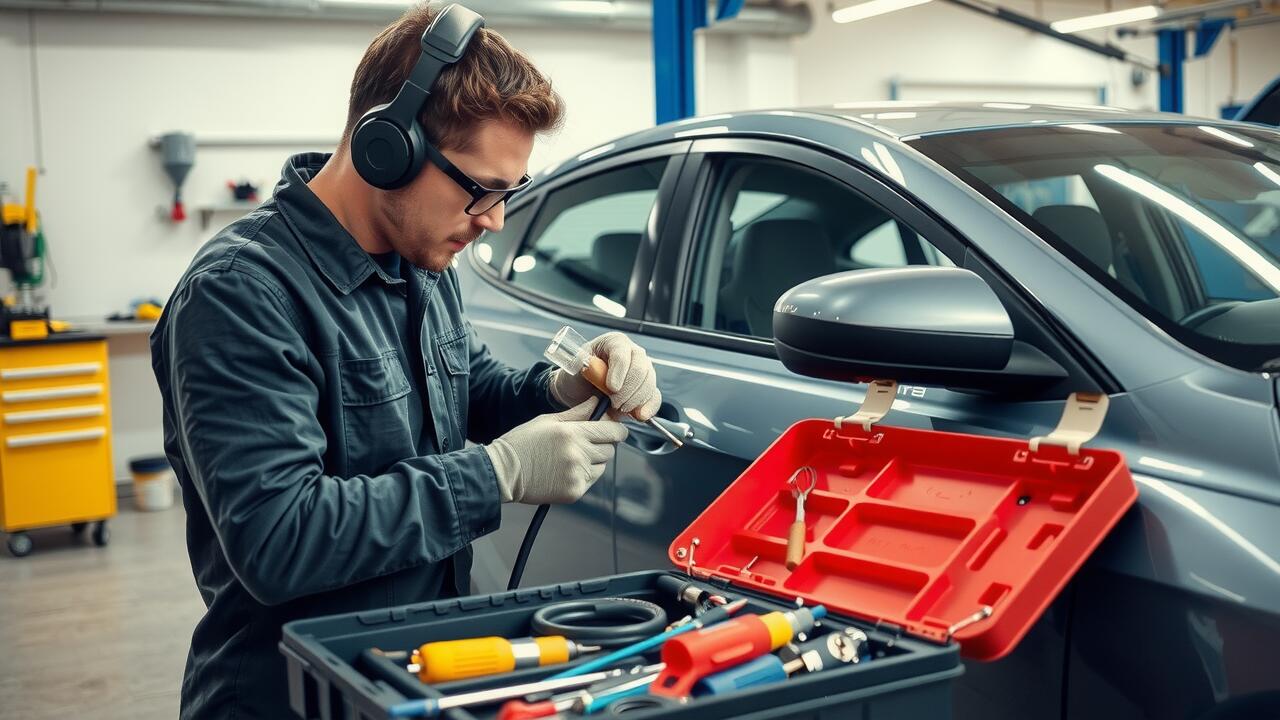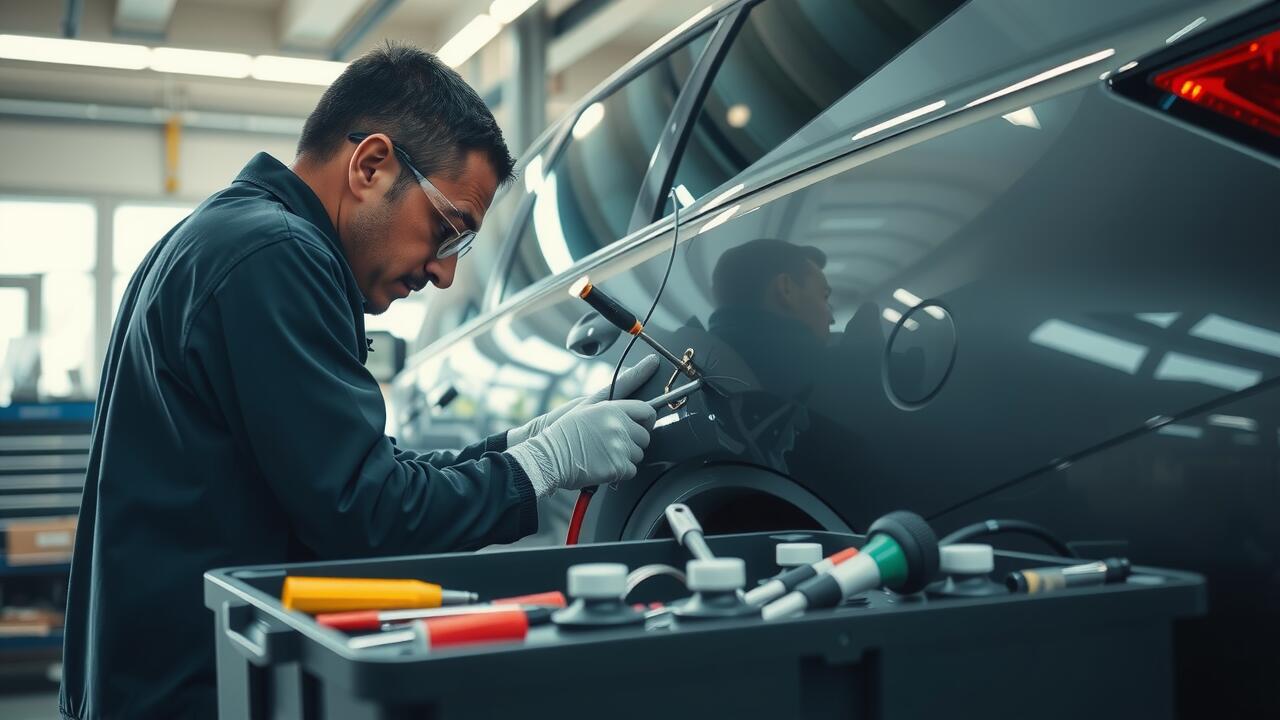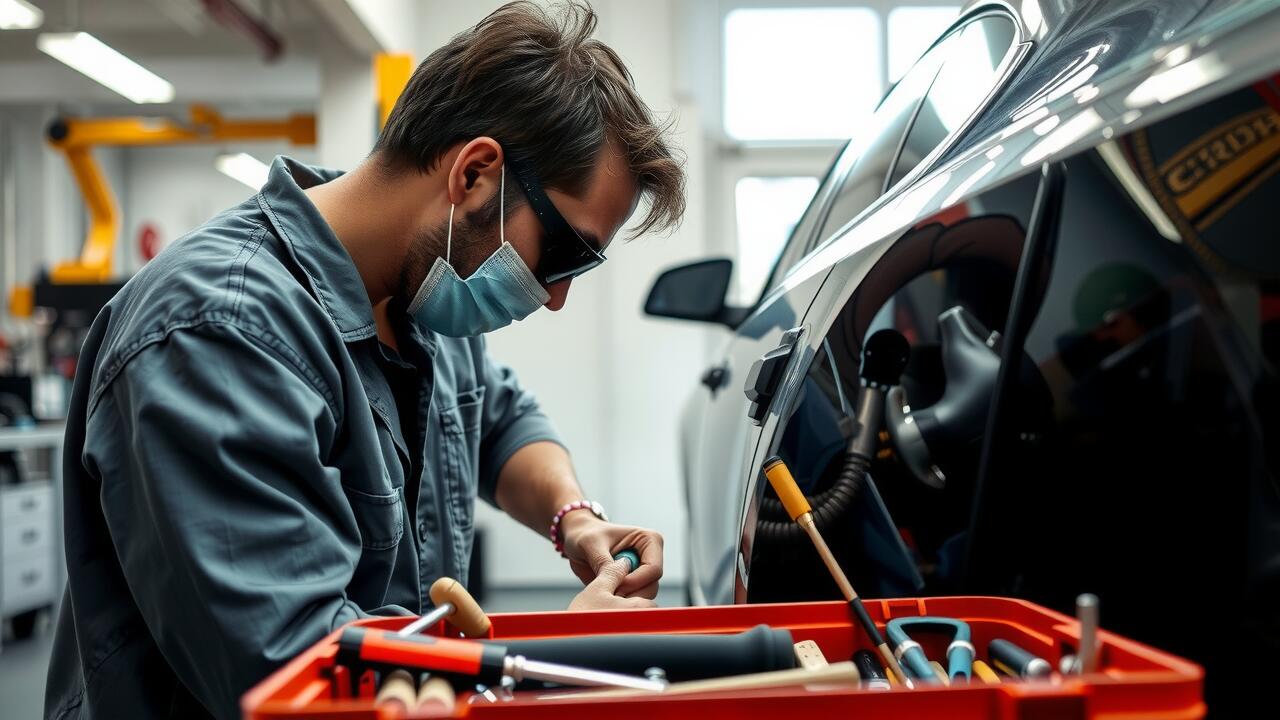
The Impact on Vehicle Value
The value of a vehicle can be significantly influenced by its exterior condition. Paintless Dent Repair (PDR) provides an effective solution for removing minor dents and dings without compromising the original paint finish. This method preserves the vehicle's integrity and appearance, which can be crucial for maintaining its market value. Potential buyers often favor cars that show minimal signs of damage, making timely repairs through PDR a valuable investment.
In addition to enhancing cosmetic appeal, PDR can play a role in the overall perception of a vehicle's value. A clean, well-maintained exterior suggests that the owner has taken good care of the car, potentially leading to higher resale prices. Buyers often look for vehicles with a strong damage history report, and employing Paintless Dent Repair helps ensure that a vehicle remains in good standing, thus maximizing its resale potential.
Resale Value and Damage History
When considering resale value, buyers often scrutinize a vehicle's damage history. Paintless Dent Repair (PDR) plays a significant role in maintaining a car's aesthetic appeal and original paint finish. Vehicles that have undergone PDR typically exhibit fewer visible signs of previous damage. This method helps preserve the car's integrity, which can be an attractive feature for potential buyers.
A clean damage history can lead to a higher resale value. Since Paintless Dent Repair preserves the factory finish and does not compromise the vehicle's structural integrity, it assures buyers that the car has been well maintained. As a result, vehicles that have received PDR tend to garner better offers, making them more appealing in a competitive market.
Customer Experiences with PDR
Many customers have praised the effectiveness of Paintless Dent Repair in restoring their vehicles' appearance without undergoing traditional body shop procedures. They often express relief at the shorter turnaround times associated with this method. Unlike conventional repair options, which can take days or even weeks, many find that PDR completes the job in just a few hours. Cost efficiency is another appealing aspect, as customers frequently note that it tends to be less expensive than other repair methods, making it an attractive choice for minor dents and dings.
Feedback from customers also highlights the minimal invasive nature of Paintless Dent Repair. Several users have mentioned their appreciation for retaining the original factory finish without the need for repainting. The ability to keep the original paint intact often enhances the overall value of their vehicle. Customers feel more confident in selling their cars, knowing that they have avoided the complications often associated with traditional repairs. Overall, the experiences shared by customers underline the advantages of opting for PDR for quick and effective dent repair solutions.
Real-Life Testimonials
Customers often share positive experiences after opting for Paintless Dent Repair. Many have noted the effectiveness of the technique in restoring their vehicles to like-new condition. These repairs often take less time than traditional methods, allowing drivers to get back on the road quickly. Savings on both time and cost make PDR an attractive option for those dealing with minor dents and dings.
One customer recounted their surprise at how seamlessly the process worked. They mentioned that the technician was skilled and professional, transforming their car's appearance in just a couple of hours. Many express appreciation for the preserved factory finish, stating that Paintless Dent Repair not only resolved their issues but also maintained the vehicle's original paint quality. Such endorsements highlight the growing belief in the value and efficiency of this innovative repair method.
Tools and Techniques Used in PDR
Paintless Dent Repair (PDR) involves specialized techniques that enable technicians to remove dents without damaging the vehicle's paint. Technicians utilize a variety of tools, including metal rods and rubber mallets, to gently push or pull the dent from behind the panel. This method preserves the factory finish, ensuring that the vehicle maintains its original appearance and value. Precision is critical in this process, as technicians must carefully manipulate the metal to restore the area to its original shape.
In addition to the basic tools, PDR professionals often employ advanced equipment such as light boards and infrared equipment to enhance visibility and improve results. Light boards highlight imperfections in the metal, allowing for more accurate adjustments. Infrared tools can help warm the panel, making it more malleable and easier to work with during the repair process. The combination of these tools and techniques makes Paintless Dent Repair an effective solution for minor dents and dings.
Essential Equipment for Dent Repair
Paintless Dent Repair (PDR) requires specialized tools designed to manipulate the metal back to its original form without damaging the vehicle’s surface. One of the essential pieces of equipment is the PDR rod, also known as a dent tool, which allows technicians to push out dents from behind the panel. This tool is available in various shapes and sizes to reach different areas of the vehicle, ensuring versatility for various dent sizes and locations. The use of heat sources, such as infrared light, can also aid in the process by softening the paint, making it easier to work with the metal.
Another important tool in the PDR toolkit is the glue puller, which utilizes specially formulated glue to harvest the dent from the outer surface. This equipment allows the technician to pull on the metal gently while minimizing the risk of paint damage. Additionally, the use of tapping tools helps to refine the repair by carefully knocking down any high spots after the initial dent removal. Collectively, these tools enhance the efficiency and effectiveness of Paintless Dent Repair, allowing for high-quality results while preserving the vehicle's factory finish.
FAQS
What does PDR stand for?
PDR stands for Paintless Dent Repair, a technique used to remove minor dents from a vehicle's body without affecting the original paint finish.
How does PDR affect a vehicle's resale value?
PDR can positively impact a vehicle's resale value by restoring the body to its original condition, which can attract potential buyers and minimize the perception of damage history.
Is PDR suitable for all types of dents?
PDR is most effective for small, shallow dents, especially those caused by hail, door dings, or minor accidents. However, it may not be suitable for larger dents or those located near the vehicle's edges.
How long does a typical PDR session take?
The duration of a PDR session can vary depending on the size and location of the dent, but most repairs can be completed within a few hours.
Are there any risks associated with PDR?
When performed by a skilled technician, PDR is generally low-risk. However, improper techniques can lead to paint damage or further denting, which is why it's important to choose an experienced provider.

